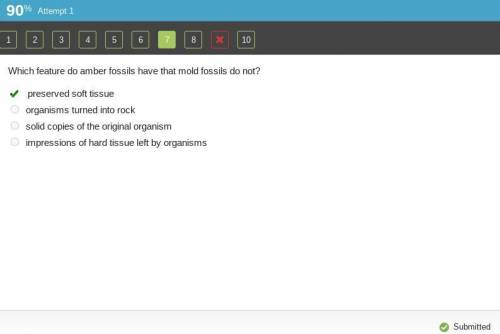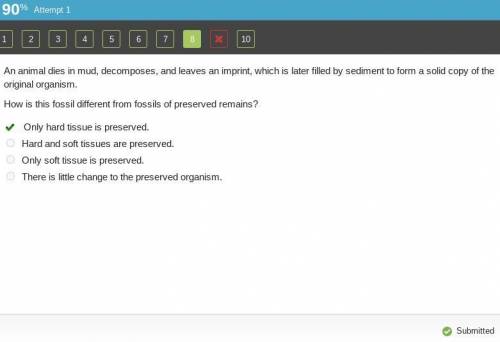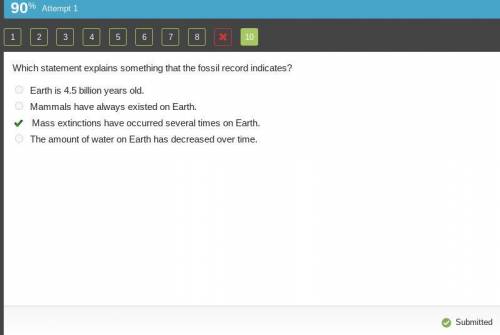Study the image.
The print of plants on a dark rock.
How does this fossil di...

Study the image.
The print of plants on a dark rock.
How does this fossil differ from fossils that have preserved remains?
Which feature does this fossil have that preserved remains do not have?
It has carbon residue left by a decaying organism.
It was formed by tree sap that turned into amber.
It was preserved in frozen soil called permafrost.
It includes the preserved soft tissue of an organism
Answer A
Hope this helps! see other answers on my profile!
I have all ANswers!!! Here they are! it will get u 90 percent
DONT ANSWER ONLY COMMENT!!
This is the second part to my other answers!





Answers: 2
Other questions on the subject: Biology

Biology, 22.06.2019 05:00, joelpimentel
Cedric has a low fever and minor aches. yesterday, he went to the doctor for his booster shot and receive the flu shot. which best explains why he has this reaction?
Answers: 2


Biology, 22.06.2019 06:20, Jennybelandres1
What are the fixed alleles in the human species? o a. the alleles that are on the most chromosomes b. the alleles that change most often 000 c. the alleles that no one has d. the alleles that everyone has
Answers: 2

Biology, 22.06.2019 13:20, danidavis2002
Which cell organelle is the site for photosynthesis? a. chloroplast b. endoplasmic reticulum c. golgi apparatus d. lysosome
Answers: 1
Do you know the correct answer?
Questions in other subjects:





English, 29.06.2021 01:00



Biology, 29.06.2021 01:00

Mathematics, 29.06.2021 01:00

Mathematics, 29.06.2021 01:00






